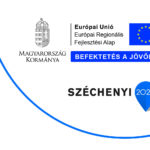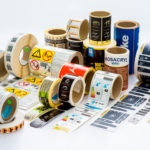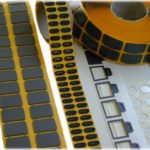RFID System
What is RFID?
RFID, which stands for Radio Frequency Identification, is the wireless use of radio frequency waves to uniquely identify and track tags automatically. RFID brings auto-ID technology to the next level by allowing tags to be read without line of sight.
Historically, RIFDs were widely used in the World War II to identify friendly airplanes or the opposition. Since that this technology has been improving gradually, while the cost of implementing and using this system continues to decrease, making RFID more accessible and cost effective.
What is an RFID System?
There are a lot of different RFID systems in existence nowadays with varying types and complexities. The simpler systems are made of a mobile RFID reader (with an integrated antenna) and RFID tags, but the more complex ones use multi-port readers and other additional devices, multiple antennas and cables, RFID tags and a full software setup.
Despite all the complexities, every RFID system contains these four components:
- Readers
- Antennas
- Tags
- Cables
Depending on the type of RFID, it can have a read range of a few centimeters to over 20 meters.
RFID Tags
RFID Tags, also known as an electronic tag, a smart tag, or a transponder, is an electronic identification technology which does not need to be seen to be read. It consists of 2 parts:
– a micro chip (an integrated circuit which stores the Tag’s ID and other information) and
– an antenna for receiving and transmitting the signals.
RFID tags transmit data through radio waves to the antenna/reader. Usually these tags don’t contain batteries (except for Active or BAP Tags) and they receive energy from Radio Waves generated by the reader. After, the energy runs through the internal antenna to the tag’s chip. The energy activates the chip, which modulates the energy with the desired information, and then transmits a signal back toward the antenna/reader.
Every chip has 4 memory banks – EPC, TID, User, and Reserved. Each of these banks include the information about the item that is tagged or about the tag itself. Depending on the frequencies, tags can be passive or active. Passive tags have read-only functionality, while active tags make it possible to read from and write data to the chip.
There are many different RFID tags available in various shapes and sizes, depending on the environments, materials and applications.
Where are the RFID tags used?
RFID tags are attached to certain objects in order to track and manage all types of inventory, assets, people, etc. They are used in many industries like healthcare, retail, automobile, IT and technology, electronics, packaging, manufacturing etc.
An obvious example where RFID tags are widely used is in the retails shops to prevent theft by customers or employees. It also has a much wider range of use, for example in an automotive industry – when it’s attached to the car, it can track its progress through the assembly line.
Possible fields of applications for RFID devices:
- Secure printing
- Stock management
- Time and attendance tracking
- Fleet Management
- Driver identification
- Kiosk & ticketing
- Physical access control
- Car/bike sharing
- Gaming
- Machine authentication
- Single sign-on
- Charging stations for EVs
- Fitness machines
How to choose an RFID Tag for your needs?
If you plan to get advantage of this technology for your company’s needs, these are the most common questions you might want to consider before deciding on which RFID system will be more beneficial:
• What type of surface will you be tagging? (Metal, plastic, wood, etc.)
• What read range do you desire?
• Size limitations
• Any excessive environmental conditions to consider? (Excessive heat, cold, moisture, impact, etc.)
• Method of attachment? (Adhesive, epoxy, rivets/screws, cable ties, etc.)
We can always help you test different tags in your environment on the actual items you wish to tag. RFID tag samples can be customized for your application so that you can choose the tags that are right for your application.
Contact Gravic Group for a professional assistance to ensure the total protection and personalisation of your RFID tags.
We are grateful for our close collaboration, and we are committed to continuing to evolve and progress to meet your requirements!
Improve your life with Gravic!
Share this post:





